Condemnation Actions: How Valuable Is Your Evidence of Property Value?
November 06, 2018 —
Erica Stutman - Snell & Wilmer Real Estate Litigation BlogWhen a government condemns (takes) private property for a public use, the property owner is entitled to receive “just compensation” equal to the property’s market value. Value is typically determined by appraisals, but if the parties cannot agree, a judge or jury will determine the amount in a condemnation lawsuit. The parties may seek to present various forms of evidence of value, though it will be admissible only if the evidence is relevant and its value is not substantially outweighed by the risk of causing unfair prejudice, confusion, undue delay or waste of time, does not mislead the jury, and is not needlessly cumulative. See, e.g., Fed. R. Evid. 403.
Read the court decisionRead the full story...Reprinted courtesy of
Erica Stutman, Snell & WilmerMs. Stutman may be contacted at
estutman@swlaw.com
Home Building Up in Kansas City
November 20, 2013 —
CDJ STAFFIt’s been a good year for home builders in Kansas City, Missouri. In fact, it’s the best year since 2007. The total number of home permits issued through October exceeds the number issued in 2012 by 164, having reached 3,463. Sara Corless, executive vice president of the Builders Association, focused more on the growth, though she noted that some builders were hoping the year’s total would exceed 4,000, which she described as “a psychological victory at a minimum.”
The Kansas City metropolitan area lead the state in the number of building permits issued.
Read the court decisionRead the full story...Reprinted courtesy of
Risk-Shifting Tactics for Construction Contracts
February 24, 2020 —
Nate Budde - Construction ExecutiveAnyone who has worked in the construction industry is familiar with the financial risks involved. With thin margins, cash flow issues and the litany of potential claims and damages that can arise, contractors need to be able to manage that risk properly.
There is the right way of going about it, and there's a wrong way. Unfortunately, the wrong way (which involves using leverage and shifting risk to other parties) is the more prevalent approach. There are different contractual tactics employed by owners and general contractors alike to shift financial risk to other parties.
Why is construction so financially risky?
There are a few different reasons there is so much risk involved. First and foremost, the construction payment chain itself is inherently risky. Owners and lenders release project funds and trust that the money will reach everyone on the job. But that can’t happen unless each link in the payment chain passes payment to the next. That's a lot of trust for an industry that's not particularly known for it.
Another reason is how construction projects begin. Upfront payment is rare in this industry. This leads to floating the initial costs, extending credit and potentially borrowing money to do so. And those who typically bear this burden, lower-tier subs and suppliers, are the least equipped for that level of risk.
Reprinted courtesy of
Nate Budde, Construction Executive, a publication of Associated Builders and Contractors. All rights reserved.
Read the court decisionRead the full story...Reprinted courtesy of
Mr. Budde may be contacted at
nate@levelset.com
20 Years of BHA at West Coast Casualty's CD Seminar: Chronicling BHA's Innovative Exhibits
May 03, 2018 —
Beverley BevenFlorez-CDJ STAFFThe Bert L. Howe & Associates, Inc., (BHA) exhibit has been a fixture at West Coast Casualty's Construction Defect Seminar since the mid-1990's. Through the years, BHA has updated their display, but no matter what year, you could count on the BHA exhibit to provide a not-to-be-missed experience.
2008-BHA's sleek, rear projection display includes a screen that promotes the firm's capabilities that can be seen throughout the exhibit hall. This would be one of many innovations BHA has brought to the West Coast Casualty seminar.
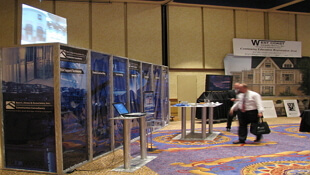
2009-With the success of the rear screen projection, BHA adds additional monitors to provide attendees with more information about BHA.
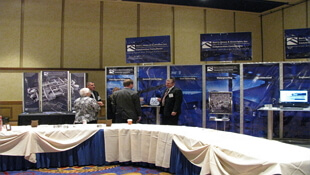
2010-BHA adds an interpretive professional development exhibit targeted to Building Envelope issues allowing adjusters and other non-construction professionals hands on access to the systems and components at the heart of many related such claims.



2011-BHA's Swing for Charity challenge is born.

2012-Always innovating, BHA expands its rear projection and professional development offerings to West Coast attendees.

2013-BHA showcases additional capabilities with a twenty-four foot, custom, convex, immersive video experience.

2014-BHA adds an iPhone display to give a hands-on demonstration of their data collection methods.

2015-BHA's twenty-four foot , custom, convex, immersive video experience was elevated with two additional rear projection screens, reflecting BHA's newest capabilities and services.

2016-BHA dazzles attendees with their new exhibit comprised of more than 15 integrated, high definition, LCD displays. iPads are stationed on tables to conveniently demonstrate BHA's data collection processes.
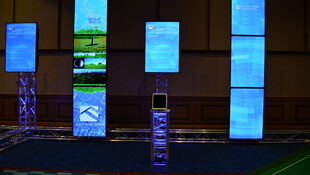
2017-BHA's Swing for Charity Golf Challenge raised $2,225.00 for the National Coalition for Homeless Veterans and $1,900 for Final Salute.
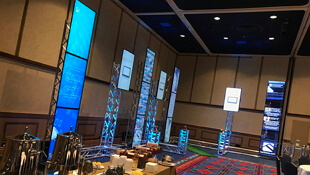
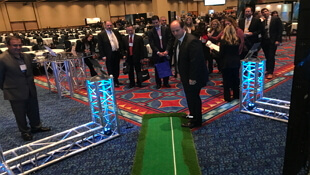
Read the court decisionRead the full story...Reprinted courtesy of
Eleventh Circuit Finds No “Property Damage” Where Defective Component Failed to Cause Damage to Other Non-Defective Components
October 11, 2021 —
Anthony L. Miscioscia & Margo Meta - White and WilliamsIn Florida, damage caused by faulty workmanship constitutes “property damage;” however, the cost of repairing or removing defective work does not. Amerisure Mutual Insurance Company v. Auchter Company, 673 F.3d 1294 (11th Cir. 2012) (Auchter). But what happens when the cost of repairing or removing defective work results in loss of use of the tangible property which is not physically injured?
The United States Court of Appeals for the Eleventh Circuit was recently faced with this question in Tricon Development of Brevard, Inc. v. Nautilus Insurance Company, No. 21-11199, 2021 U.S. App. LEXIS 27317 (11th Cir. Sep. 10, 2021). Tricon arose out of the construction of a condominium. Tricon was hired to serve as general contractor for the project and hired a subcontractor to fabricate and install metal railings. The railings installed by the subcontractor were defective and damaged, improperly installed, and failed to meet the project’s specifications. Tricon filed an insurance claim with Nautilus Insurance Company, the subcontractor’s commercial general liability insurer, for the cost to remove and replace the railings.[1]
Reprinted courtesy of
Anthony L. Miscioscia, White and Williams and
Margo Meta, White and Williams
Mr. Miscioscia may be contacted at misciosciaa@whiteandwilliams.com
Ms. Meta may be contacted at metam@whiteandwilliams.com
Read the court decisionRead the full story...Reprinted courtesy of
New York's De Blasio Unveils $41 Billion Plan for Affordable Housing
May 07, 2014 —
Henry Goldman – BloombergNew York Mayor Bill de Blasio presented plans to build and preserve 200,000 units of affordable housing in the next decade by increasing rent protections for the poor and requiring developers to include below-market apartments in newly zoned areas.
The $41.1 billion program, paid for with city, state, federal and private funds, would focus 60 percent on preservation and 40 percent on new construction. About $8.2 billion of the cost would be borne by the city, according to a 116-page report detailing the plan, which de Blasio called the “largest, fastest” affordable-housing program ever attempted at the local level.
De Blasio, 52, a self-described progressive and the city’s first Democratic mayor in 20 years, took office in January after describing income inequality as the most serious issue facing the most populous U.S. city. He turned his attention to housing today after pushing the state legislature in March to grant the city $300 million to institute universal all-day pre-kindergarten.
Read the court decisionRead the full story...Reprinted courtesy of
Henry Goldman, BloombergMr. Goldman may be contacted at
hgoldman@bloomberg.net
Employees Versus Independent Contractors
February 23, 2017 —
Chadd Reynolds – Autry, Hanrahan, Hall & Cook, LLPAre the workers you employ on the job site considered employees or independent contractors? This is an important distinction that contractors and subcontractors must understand for many purposes, including federal taxes. The classification of your workers can affect their federal income, social security, and Medicare taxes, and the type of benefits they can receive.
When determining whether workers should be classified as employees or independent contractors, courts generally look at three key factors: behavioral control, financial control, and the relationship of the parties.
Behavior Control
Behavior control concerns the business’s right to direct or control how the worker does its work. A worker is likely to be considered an employee when the business maintains behavior control. Such control can be exercised by giving instructions. This would include instructions on how, when, or where to do the work, what tools or equipment to use, who to hire to help with the work, or where to purchase the supplies to be used. Behavioral control can also occur through training. If the business provides training to tell the worker to do the work in a certain manner then the worker is more likely to be an employee.
Read the court decisionRead the full story...Reprinted courtesy of
Chadd Reynolds, Autry, Hanrahan, Hall & Cook, LLPMr. Reynolds may be contacted at
reynolds@ahclaw.com
Design & Construction Case Expands Florida’s Slavin Doctrine
January 21, 2015 —
Beverley BevenFlorez-CDJ STAFFAccording to Amanda Baggett of Rogers Towers, Florida’s “Fourth District Court of Appeal appears to have expanded the Slavin doctrine in the context of design professional liability” in the case McIntosh v. Progressive Design and Engineering, Inc. (Jan. 7, 2015). McIntosh, a personal injury case, involved whether the design and construction of an intersection with multiple traffic signals in close proximity created confusion for drivers.
Baggett stated that McIntosh expanded the Slavin doctrine in two ways: “first, the ruling eliminates the requirement that the ultimate owner of a project accept the project before the Slavin doctrine may be invoked. Second, the decision applies the Slavin doctrine to completed and accepted design plans without regard to the completion of the project for which they were prepared.”
Read the court decisionRead the full story...Reprinted courtesy of




































































